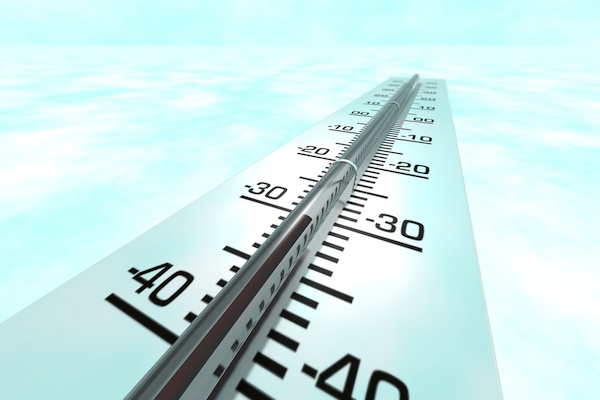Brown Fat Could Lead to Cold Weather Weight Loss
 Dropping temperatures could mean shrinking waistlines. Photo via Shutterstock
Dropping temperatures could mean shrinking waistlines. Photo via Shutterstock
If your idea of the perfect snow day involves a whole lot of couch surfing and cocoa—not exactly strenuous stuff—you’re not alone. But research suggests that shoveling snow isn’t the only way to burn calories when the temperature drops and the snow is falling. Brown fat, or “healthy” fat, may do that for you.
Brown fat is a type of body fat that your system uses to produce heat and maintain body function in cold temperatures. Research shows that it can actually burn calories when kickstarted by chilly conditions (the New York Times says about 250 calories in three hours). Experts say that babies and rodents have a lot of brown fat, since neither can shiver and thus need the fat to keep them warm, but in recent years they’ve found it in adult humans as well. The Times article explains that researchers found the substance along the spine, upper back, shoulders, and collarbone of adults they studied, with more of it found in thin people than those who were overweight. That discovery means that, if researchers can find a way to activate it, fat could actually make us thin.
Boston University is trying to do just that. A November 2012 release from the school details their efforts to understand and utilize brown fat, starting with reviewing more than 1,000 positron emission tomogrophy (PET) scans, a type of imaging test, to find individuals to use in brown fat testing. Caroline Apovian, an associate professor of medicine and pediatrics at the BU School of Medicine and director of the nutrition and weight management center at Boston Medical Center is leading the tests. She says in the report that using brown fat for weight loss is an entirely plausible goal:
“What we’d like to do is figure out a way to activate that brown fat and have the white fat around it”—the ordinary kind—“make more brown fat,” Apovian says. She is hopeful that if they can trick the body into producing more brown fat, “people won’t have to exercise, which nobody seems to want to do.”
To achieve that goal, the release says BU’s next frontier is moving into human trials. The report says the researchers will induce cold in their test subjects to measure how brown fat reacts and burns calories. But, Apovian cautions in the release, the testing still isn’t conclusive:
“This is just at the very beginning stages. Maybe in 50 years, we’ll have found a way to turn white fat into brown fat so that you can eat whatever you want, eat junk food, and still stay lean. But not now.”
So while trekking down the street in 30 degree weather sounds awfully unappealing, this research shows us that the cold is actually a good thing, at least from a weight loss standpoint. And maybe brown fat will be just the extra motivation we need to go out and enjoy this weather instead of hiding from it. Maybe.


